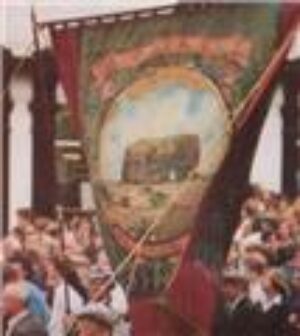Salmons was located on The Leas below a small hillock named Harton Downhill, which is known locally as Blackberry Hills. The Hall had unrestricted views of the coastline and below the Hall lay Manhaven Bay. Although known as Salmons Hall the correct title of the building was Marsden Cottage. The name change occurred when Thomas Salmon lived in the house in the mid 19th century.
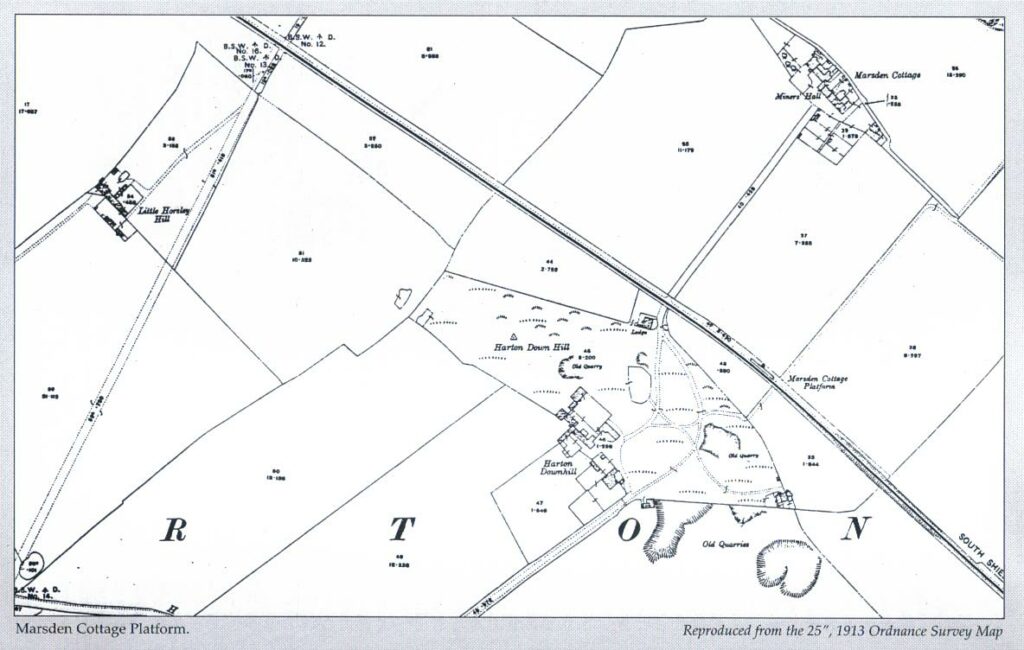
Today The Leas is a huge area of green belt land situated on the coast stretching from Trow point in the north to Lizard point in the south. It is owned and maintained by the National Trust. The Leas is very popular with walkers, dog walkers, cyclists, horse riders, joggers and other outdoor enthusiasts. However visitors to the area 150 years ago would have seen a different landscape. Then the leas had an agriculture landscape with farmers fields, hedgerows and probably the most imposing feature Marsden Cottage.
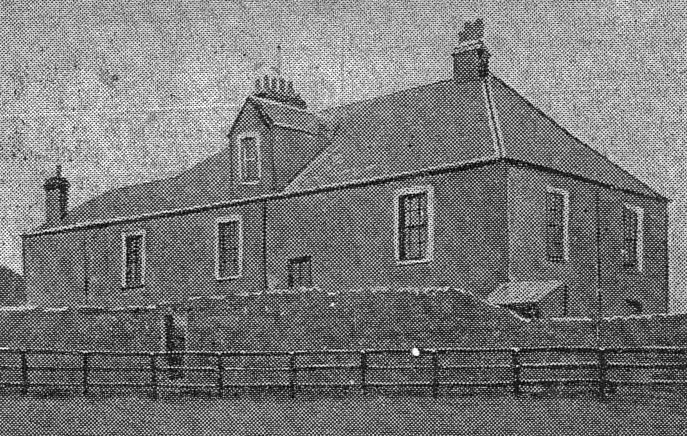
Marsden cottage was built at the turn of the 19th century when Napoleon’s armies still terrorized Europe. Lord Nelson was still to lead his naval engagement at Trafalgar (1805). The Duke of Wellington was still to meet his Waterloo (1815) and George Stephenson was yet to build the first practical steam locomotive (1814).
Britain was in the midst of the industrial revolution any entrepreneur willing to take a chance could make big money. In this climate of change Britain was about to become the most powerful empire in the world and Britannia would rule the waves.
Marsden cottage would become synonymous with some of South Shields most powerful and influential ship owning and shipbuilding families.
The Cottage was built by William Barras (1752 -1818). William was a member of a wealthy land owning family from Whickham. The Barras fortune had developed through “wayleaves”, tolls levied by landowners for allowing coal to be transported across their land. The route from County Durham’s northernmost pits to the staithes at Derwenthaugh and Dunston was a lucrative one. William also had large shipping interests.
His brother John Barras established a brewing business in Gateshead around 1775. The Barras brewery was one of the original five companies that formed Newcastle Breweries Ltd in 1890. (The Barras name lives on through the branded chain of pubs owned by The Spirit Group of Burton on Trent. The first John Barras pub was introduced in 1994. There are now over 115 pubs around the country).
By 1809 William and his family were in residence at Marsden. Documentation shows on the 30th of December that year a coming of age party was given for William jr.
In 1816 the house was “To Let” and was described as a newly- built Mansion house called Marsden Cottage, situated in the Township of Harton, containing a Dining-room, Breakfast-room, a good Kitchen, Pantry and servants hall on the ground floor; a Drawing-room, 5 good Lodging rooms, good cellars, Wash-room, coach-house, stables and every other convenience, together with a garden. Excellently situated for bathers being only 300 or 400 yards from the sea. The estate also had a lodge house at the bottom of the drive.
Where the Barras family went is unknown, however it was highly possible it was Cornwall. Anyway by 1818 following the death of William snr the family were back at Marsden with William jnr now head of the household.
By 1828 the family were on the move again this time relocating to Faleham Middlesex.
On the 12th July that year Marsden Cottage was put up for sale, with what appears to be little success, because in 1830 a “Sale by Auction” was held. Described as “A Mansion House called Marsden Cottage, with Coach-House, Stables and Outbuildings all in perfect repair, and 27 acres of Grassland; delightfully situated on the sea coast between South Shields and Whitburn. A commodious Lodge at the entrance to the premises affords an excellent convenience for brewing and washing. There is a warm bath, water closet, force pumps, spring of excellent water and large tanks for rainwater. The furniture may be taken at a valuation”.
1830 would appear the right date for Thomas Forrest purchasing the building. Forrest was a shipowner and shipbuilder. He was born in South Shields in 1766 and died in 1852 (a monument to him can be found in St. Hilda’s church).
Forrest was one of the most influential men of his day in the borough. In 1833 aged 67 he dissolved his partnership in the shipbuilding firm Forsyth and Co and went into semi-retirement. In the same year he purchased and presented to the people of South Shields it’s second lifeboat the “Tyne“ to replace “Original“ which was wrecked in 1830.
Although the new owner of Marsden cottage he used it as a retreat and continued to live in his town house in Wellington Street until his death.
The next owner of the cottage was Ann Roxby born in 1793 she died in 1863 a memorial inscription can be found in St Hilda’s church. Her maiden name was Forsyth and she was a member of the Forsyth shipbuilding family. She married Captain James Wardle Roxby in 1814.
Captain Roxby was born in 1786 and died in1850. He was Master Mariner, Shipowner, Sailmaker and Justice of the Peace for County Durham. A memorial inscription can be found in St Hilda’s church.
Ann Roxby like Thomas Forrest before her, only used the cottage as a summer residency preferring to spend the winters in her town house in Ogle Terrace until her death in 1863.
The following announcement appeared in the Shields Daily Gazette Thursday 4th June 1863

The first owners of the Marsden cottage, William Barras, Thomas Forrest and Ann Roxby nee Forsyth all had shipping interests.
The South Shields Shipbuilding yard of James and Thomas Forsyth built and launched 21 ships from their yard between 1811 and 1859.
Interestingly they launched the following named ships:
The Marsden in 1831
The William Barras in 1834
The Thomas Forrest in 1849
The Ann Roxby in 1853
The following clipping is from the Newcastle Journal 8th September 1849

The Marsden cottage auction of 1863 would be in the right period for Thomas Salmon acquiring the building.
Born in 1794 Salmon commenced practice as a solicitor in South Shields in 1817. He was one of the leading promoters of the Town Improvement Act. Following the incorporation of the Borough he was unanimously elected the first Town Clerk, a post he held until his death in 1871.
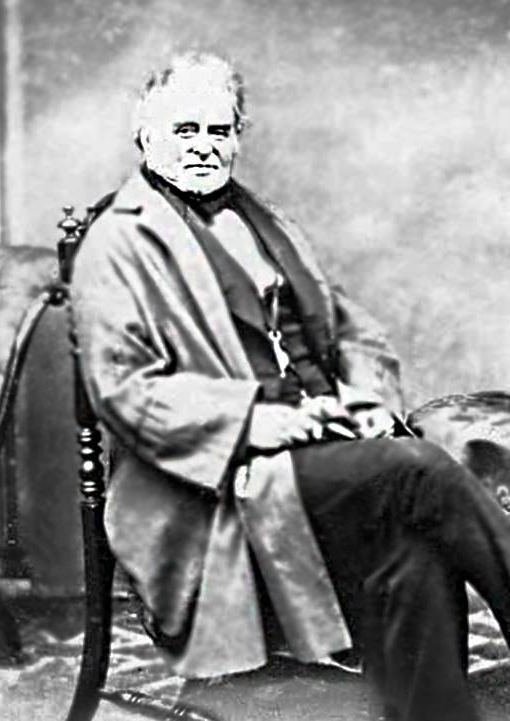
When Thomas died in May 1871 his son John took up occupancy at Salmons Hall. The census of 1881 shows John and his family in residency.
The Newcastle Chronicle ran a article on the 11th April 1924 by Thomas Marshall titled Manhaven & Salmon’s Hall. Sidelights on South Shields History.
Other than mentioning the location of the hall the article was primarily about the life and times of Thomas Salmon. One interesting abstract from the article did include the Hall and Manhaven: ‘Salmon only spent a portion of his years at the Hall near Manhaven. He possessed a coble which lay in the haven and which he used frequently. At one time the mouth of the Tyne by a heavy sandbank known as the Bar, now almost non-existent owning to extensive dredging and the lengthening of the harbour seawards. Only at high water could the bar be crossed by vessels of any great draught, and at low water, the sea often broke heavily, making it impossible for a pilot’s coble to pass out to meet a ship without running great risk. Many lives had lost on the Bar and the pilots were forced to cast about for some alternative means of embarkation, and they at last hit upon the idea of carrying their cobles overland and launching them in Manhaven, where Salmon had erected ways for the lunching of his own boat. No sooner was this rash expedient suggested than it was carried out, and the strange spectacle of boats travelling along the coast on wheels was seen. A winch was used for hauling up the cobles, the pilots could easily judge the depth of water on the bar from the Whaleback Rock a reef at the end of the haven, which was submerged at high water’ ’It was Salmon who did much to secure them their Commission which has now become the Tyne Pilotage Authority. The Tyne pilots at a later date requested Trinity House to provide them with some manner of steamer, and so obviate the unnecessary risk they ran putting out from the coast in open cobles, and the result was that they were assisted to purchase their first steamer. They had then no longer to rest upon the hospitality of the owner of Salmon’s Hall’.
By the time of the 1891 census the Hall had been leased to the Whitburn Coal Company and John Salmon had relocated to Cleadon Park.
Once the Coal Company took over the lease of the Hall it converted the outbuildings into cottages and divided the main house into separate dwellings for men working at the nearby Whitburn Colliery. At the census the Hall was providing homes for up to a dozen mining families.
Salmons was fairly remote only accessible via the coastal footpath or by farm tracks over Harton Downhill. To help get their workforce to and from work the Harton Coal Company built a station called Marsden Cottage Halt on the Colliery railway line. The colliery mineral line ran coal from Whitburn Colliery to the staithes on the Tyne. When the line opened in 1879 the owners put on 6 passenger trains a day in line with the miners shift pattern to get the workforce who lived in South Shields to Whitburn. Because of the age and condition of the carriages used, the passenger trains were known locally as the Marsden rattler. The station was reputedly to be the smallest station in the country with only room for one carriage. Although officially being called Marsden Cottage all who knew it, knew it as Salmons Hall.
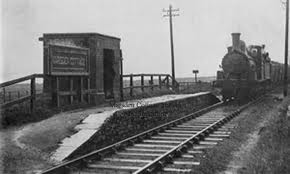
Salmons Hall had remained fairly isolated until 1929 when the new coast road between South Shields and Whitburn opened which followed the route of the railway line along the coast.
The Hall has always held fascination for me as both my paternal and maternal grandparents were brought up and married at Salmons. As a child my grandmother Ada Cauwood nee Burn used to tell me stories about living at Salmons at the turn of the 20th century.
The 1911 census shows 9 families living at the converted hall. A total of 67 men, women and children living in this isolated hamlet, names which can still found in and around Whitburn today. Waggott, Burn (my grandmothers family), Sparks, Miller, Auty, Elliott, Cauwood (my grandfathers family), Shotton and Varley (Thomas Varley was known as the Marsden hero he was given the title after saving the lives of 2 South Shields pilots in 1893 after their boat capsized) .
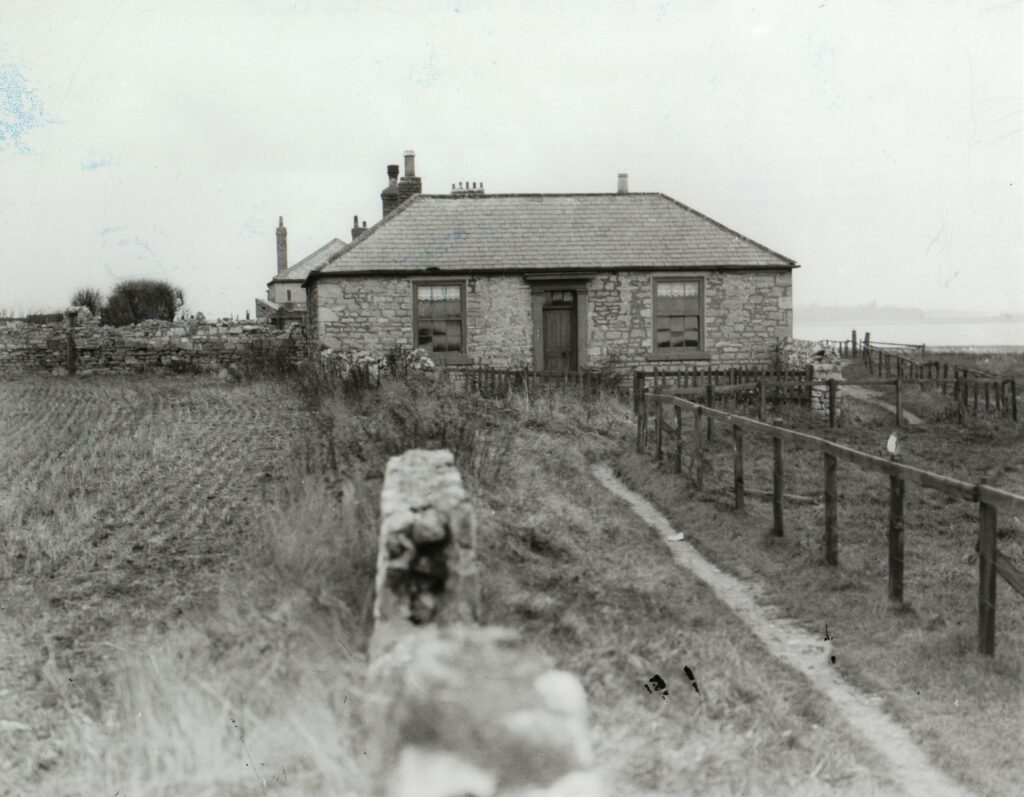
The sinking of Marsden Colliery commenced in 1874 by the Whitburn Coal Company. Coal production started 8 years later in 1882. In 1891 The Harton Coal Company acquired Marsden and the name was changed to Whitburn Colliery. Also in 1874 the coal company started to construct Marsden Village to the north of the colliery to house the new workforce which would come from all over the country. It also took upon itself to buy or lease any kind of dwelling in the nearby vicinity to house men. These included, Marsden Grotto, Salmon’s Hall, Local Farmsteads, the Convalescent Homes on Redwell Lane to name a few.
My grandmother Ada Cauwood nee Burn was born in 1894 in the Convalescent Homes on Redwell Lane not far from Salmon’s Hall. Her family were from Birtley and her father Thomas Burn had moved to the coast when he acquired work at Whitburn Colliery. They moved from the Homes to Salmon’s Hall in about 1902 when Ada was about 8 years old.
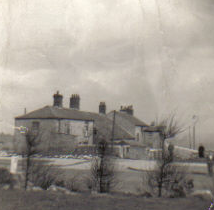
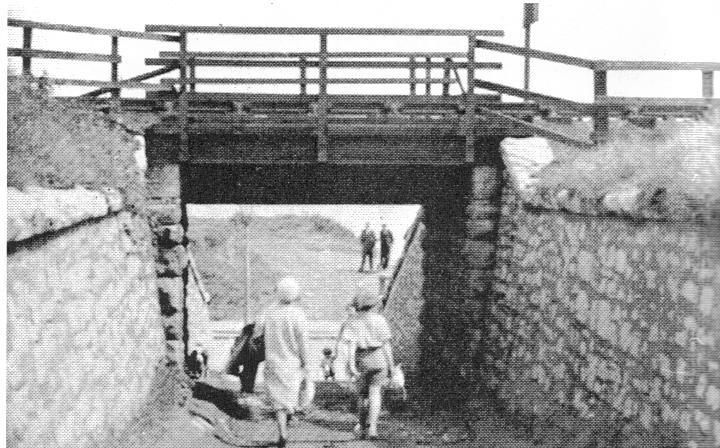
When the family moved to Salmon’s they lived in the main building which had once been the kitchen area. The 1911 census indicates they had 4 rooms. It also indicates that they had 14 children 9 still alive and 5 that had died.
Ada always had a fond affection for Salmons Hall and was always happy to reminisce about her days living there the happy times and the tragedies.
The Cauwood family, my great grand parents Arthur and Hannah (nee Oley) and my grandfather Walter, moved to Salmon’s Hall from Corbridge Street Tyne Dock about the same time as the Burn‘s family. Their new home also had only 4 rooms the 1911 census indicates they had 13 children at this time.
Although off the beaten track with few amenities it must have been like an adventure playground for the younger children, after the poor housing and environmental conditions of Tyne Dock. To find that they were now living on one of the most attractive and spectacular stretches of the North East coastline it must have been a time of great excitement. Gull packed cliffs, the rocky pinnacles, rock-pools, the breathtaking sandy arc of Marsden Bay. The small fishing boats pulled up on the beach at Manhaven Bay, the flora and varied wildlife of their cliff top location.
Ada recalled as a child, all the children of Salmon’s played happily together in the fields, on the cliff tops, or on the beach with no restrictions from adults, they just went where they wanted to go.
Like most mining communities life at Salmon’s was also hard. No electricity or running water and children still had their chores to do.
Men went to work and the wives looked after the home. Being so isolated, shopping was also a chore with the children being sent to purchase goods from local farms. If something from a shop was required it was usually a walk over Blackberry hills into Harton Village. Ada can never recall being hungry as a child, as all the men kept gardens, had chickens, and had small boats at Manhaven so there always seemed to be an abundance of fresh fish.
Although sounding and looking idyllic it’s a place also known for its wild winter weather – with the North Sea battering the coast. Winter was a time to batten down the hatches and have the fire up the flue. Ada recalled winter nights were long for the children with no electricity, the only pastimes were board games or making clippy mats by oil lamps.
Salmon’s Hall was such a small close knit community and being so isolated the inevitable often happened the children that grew up together married in later life. Ada married Walter Cauwood in 1914, her sister Sarah Jane Burns had married Thomas Cauwood in 1909, and Joseph Cauwood married Marie Sparks in 1915.
When young Arthur Cauwood’s wedding took place in 1920 so many barrels of beer were purchased that the whole of Salmon’s Hall were intoxicated for 3 days, until the last drop had been drunk, most of it by his father and mother Arthur and Hannah.
As the Cauwood sons came of age one by one they went down the pit until all ten of them were working with their father at Whitburn Colliery.
On the 11th of March 1930 The Shields Gazette carried a photograph on the front page entitled
A Sturdy Family of Pit Workers
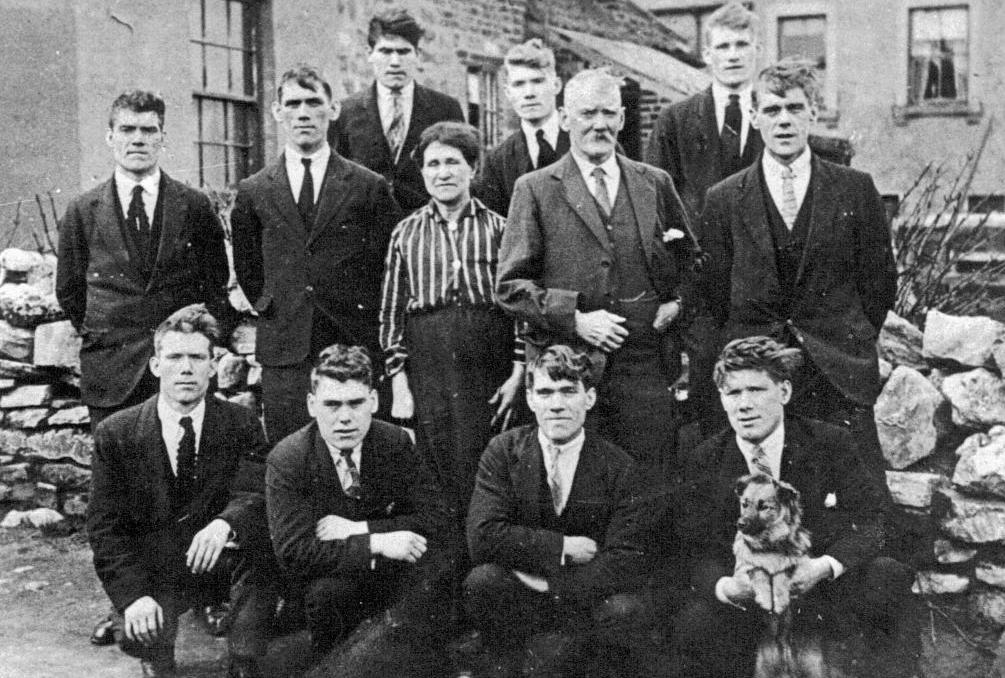
Arthur the father was born in Ecclesfield, Yorkshire in 1862. There is some suggestion that he was the black sheep of the family. One thing that is certain he came and settled in the North East. At the 1881 census Arthur was still living in The Wheel, Ecclesfield with his parents. Aged 18 his occupation is given as a coal miner. Sometime in the intervening 6 years between 1881 and 1887 he relocated to South Shields. He met and married Hannah Oley in 1887. They had 10 sons and 4 daughters.
Hannah was a direct descendant of the Shotley Bridge Oley’s, German sword makers who had fled persecution from their homeland.
By the 17th century the Oley’s had money and a profitable business. However they were also great gamblers and over the years they lost all their wealth, land etc. They eventually sold the Swordmaking business to Wilkinson sword. Any money left from the sale had long gone by Hannah’s generation.
Both Arthur and Hannah were both well known around the Marsden area probably due in part, to their liking for a drink. Their favourite watering holes being the Grotto and the old Marsden Inn.
Hannah appears to have been a character, well liked by all that knew her. Loud and boisterous, often seen smoking a clay pipe. However she was not blessed with the greatest domestic attributes when it came to keeping a clean house. Although very generous keeping an open house to all that knew her, unfortunately this generosity was also extended to the family’s domestic fowl. Chickens and ducks were allowed to wander in picking up crumbs from the living areas regrettably they fouled the house.
It was said she never slept, as there was always one of her sons coming in or going out on shift and a hot meal was always ready for them. On the middle of the kitchen table she always kept a large bowl of salt and large handfuls went into everything she cooked and then onto the meal as she dished it up. The sons were always on different shifts as there was not enough beds to go around so it was one in one out, the beds were said to be never cold.
On Sundays she would cook a large bowl of hard-boiled eggs, which were placed in the middle of the kitchen table. These were left for visitors who had walked along the coast from South Shields.
On one occasion after an afternoon session in the Marsden Inn, Hannah started her walk home to Salmons Hall. When 2 of her sons returned home from work there was no meal ready and their mother was missing. The sons went to seek her at the pub only to be informed she had left for home earlier that afternoon. A search was launched along the route she would have taken. She was found within a short time, she had been so drunk she had fallen over the banks and had broken her arm and could not get back up.
Arthur and his sons all survived working underground however tragedy struck the family in 1936 the year before Salmon’s Hall was demolished. Son Robert was killed in a freak accident on Whitburn Colliery’s pit heap. Robert now married was living in Marsden village. At the time the colliery had been idle for some weeks as the men were on strike. Robert like most of the men in the village spent their days on the pit heap scavenging for pieces of coal. Robert was near the bottom of the heap when a large boulder set itself away from near the top it rolled down the heap and collided with him. He died the following day from the injuries he received. An eyewitness at the time told his brother Arthur that when the boulder had became dislodged the men round about shouted warnings. Robert had heard the alert and tried to take evasive action however as he moved one way the boulder also changed direction when he moved back the boulder also changed course before smashing into him. The eyewitness stated “it was if it had his name on it”.
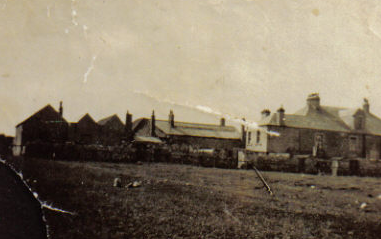
In 1937 the Shields Gazette ran an article entitled “Memories of No-Man’s Land” coinciding with the start of the Hall’s demolition.
The article was an interview with a Mr and Mrs Miller the oldest couple and the last to leave the Hall. The couple had lived at Salmons for 37 years and reminisced about that period.
“With the light from a smoke stained oil lamp sending shadows flicking over the walls, Mr and Mrs Miller sat in their age-old cottage at Salmon’s Hall and told of the tragedies and happiness of the place they called “No Man’s Land”.
“Real merry Christmastides were had as all the occupants of Salmon’s Hall made their own fun”.
Mr and Mrs Miller also told of a fated cottage “from the house there was an underground passage leading to the shore. One occupant Ned Phillips liked to walk along the passage for a smoke. One day he went and never came back. The only trace that they ever found was his cap and handkerchief at the end of the tunnel.
The mother of another family that lived there would always watch for her son coming down the drive from work. This day she looked out of the window and saw some men carrying his dead body, such was the shock that she dropped down dead.
This incident was reported in the Shields Gazette on 1st October 1887. The family name was Makepeace. They had moved to the coast from East Durham when the head of the household William obtained work at Marsden Colliery. It was his wife Martha and son Wilson that the article referred to.
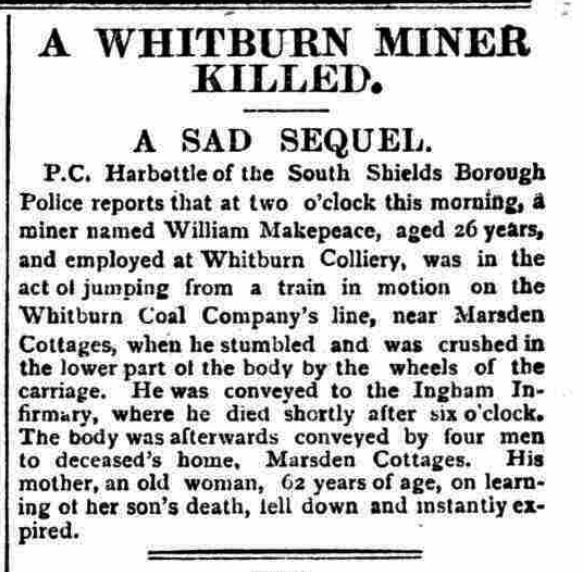
There are 2 discrepancies in the Gazette’s report. The son’s name was Wilson not William and he was 23 years old.
A sad postscript to this story is that 2 years later his younger brother James aged 21 was also killed on the railway.The accident occurred on 27 Nov 1889 when he was crushed by coal wagons. He was taken to Ingham Infirmary where the next day, his leg was amputated. He died an hour later.The inquest revealed that if the decision to amputate had not been delayed by his friends he might have stood a better chance of survival. All 3 are buried in St Peters, Harton. Both men are remembered on our memorial page.
Another man who lived in the house went out in a boat with his son. They were not far out to sea when a squall came up and both were drowned.
(This incident occurred in June 1923 and the man was Ada’s father and her brother). The following article appeared in the Shields Gazette dated 12th June 1923.
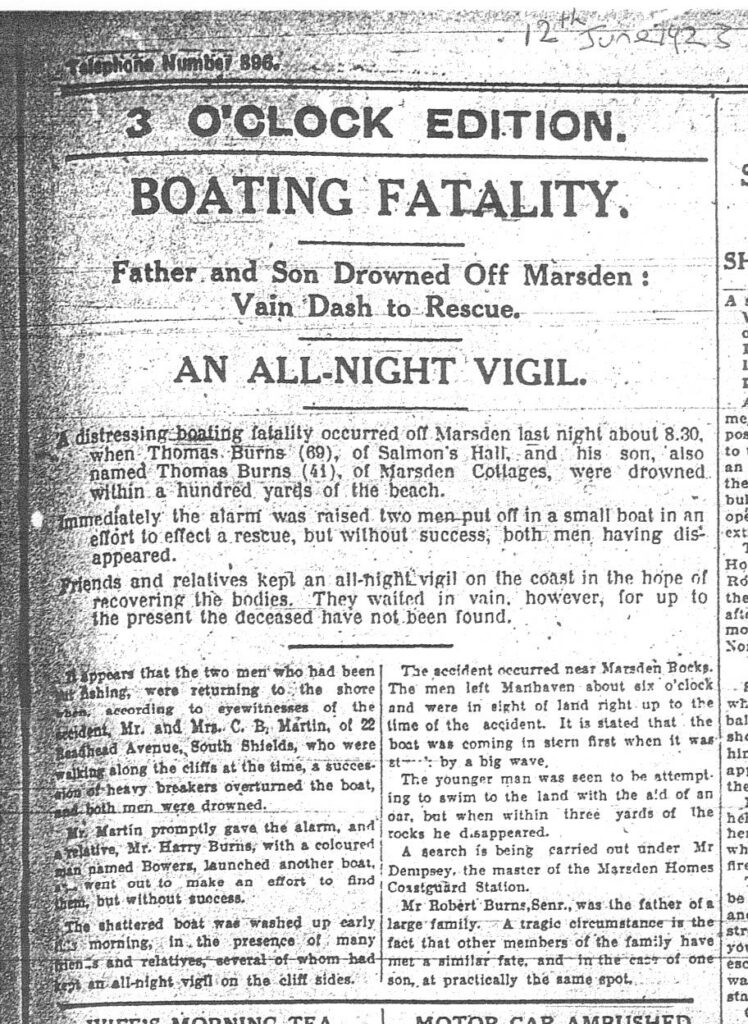
The last paragraph of the article reads :
Mr Robert Burn Senior was the father of a large family. A tragic circumstance is the fact that other members of the family have met with a similar fate and in the case of one son at practically the same spot. This was her fathers brother Ada’s uncle Henry.
I have always been aware of these tragedies as throughout her life Ada would always recall how she lost her father, bother and uncle and she had been one of the family keeping vigil throughout the night as stated in the article.
Mr and Mrs Millers most vivid memories are of the war days (WW1) when bombs dropped by a Zeppelin fell into a field next to Salmon’s Hall tearing away doors and shattering windows.
“When the air raid was on I was so frightened I ran outside” said Mrs Miller “ It was amazing that I was not killed”. She later saw the humorous side to it. Apparently the look-out man was coming down the hill when he saw Mrs Miller in her white nightgown, he actually thought it was a ghost and took to his heels.
Pastimes at the Hall for the men folk included gardening and fishing. On the shore below the Hall lies Manhaven Bay where small fishing boats were kept.
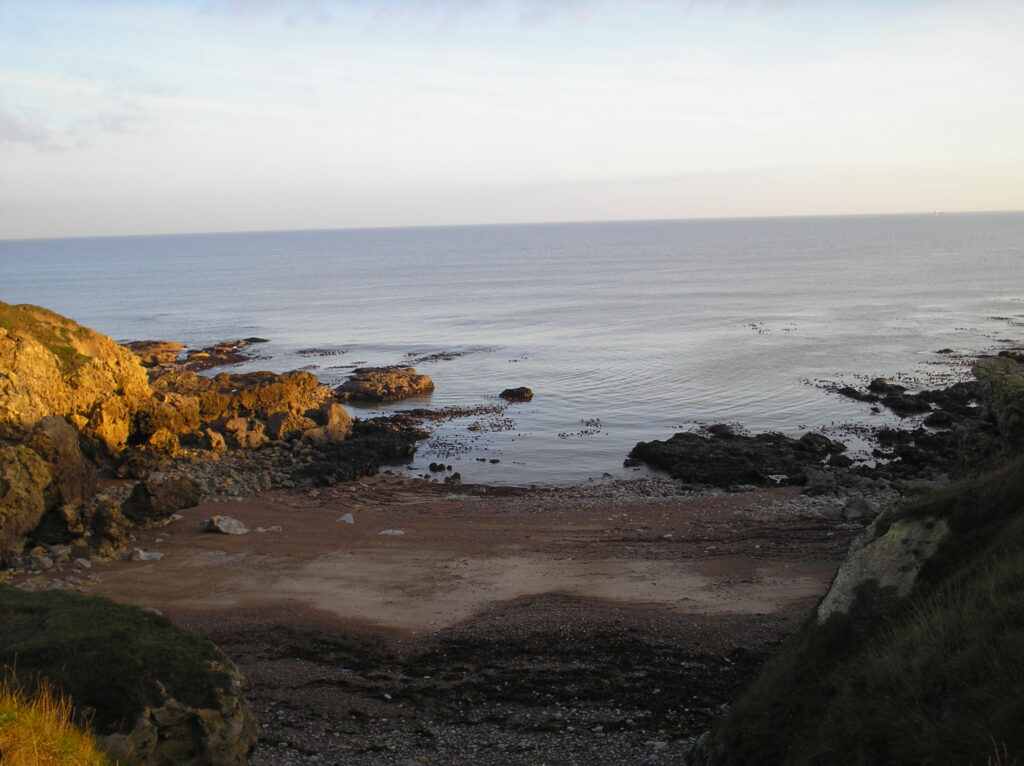
Manhaven comes from the old English mann = community and haefen = harbour.
Community Harbour.
Smuggling along this part of the coast is well documented especially at the Marsden Grotto, which is renowned for its association with smuggling. The Grotto is situated about a ½ mile to the South of Salmon’s Hall.
There appears to be nothing written about smuggling and Salmons, however what is fact is there was a passage way from the house to the beach.
In the article when the Millers were reminiscing about Salmon’s they told the story of Ned Phillips who used to like to walk along the passage to have a smoke. When the Burn family moved to Salmon’s they moved into the kitchen area, which was part of the main house that had been converted into an individual dwelling. In the pantry area was a door that lead to the passageway. Ada used to say as children they used to often go this way to the beach.
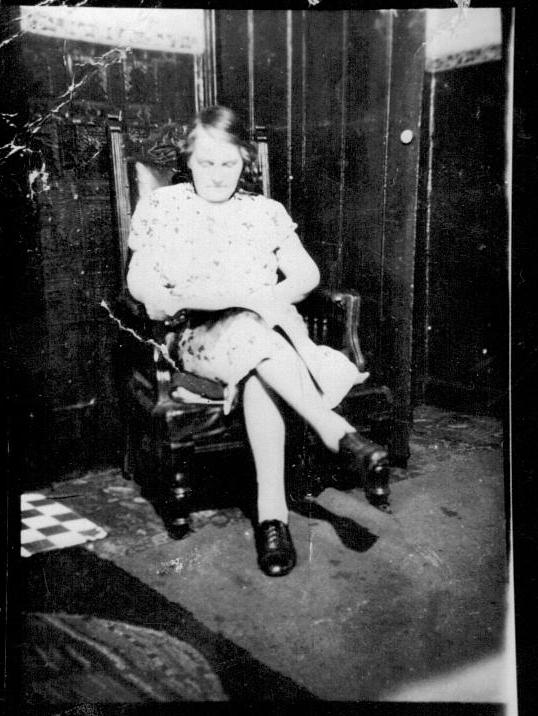
The mystery is who built the passageway and why? Was it the Barras family who probably built the house? It must have been easier to drive a tunnel from the seashore to a location when a house was being built rather than when it was built.
All the early owners of the cottage had shipping interests. Their ships returning to the Tyne from far away ports would pass Marsden cottage and probably drop anchor off Manhaven awaiting pilots or the tide to turn. Was this the reason why Marsden cottage was built here? So exotic and illicit goods could be brought a shore covertly? It is an interesting thought and would explain the tunnel.
When the house was built at the turn of the 19th century smuggling was still big business.
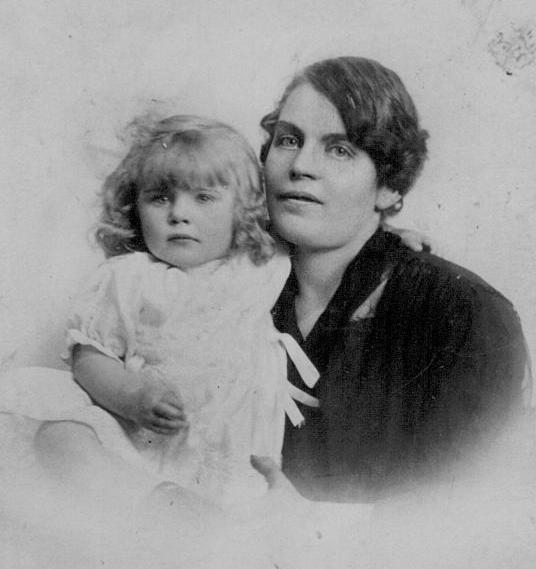
Ada loved living and reminiscing about Salmon’s Hall. Without her memories I would not have embarked on this brief insight. Born at the Homes on Redwell Lane, she lived at Salmons Hall, Marsden Colliery, and then until her death in 1979 Whitburn Village, never out of view of her beloved North Sea. Despite all her family’s tragedies at the hands of the sea, it never stopped her allowing her own son’s setting off to sea in small fishing boats. In fact she loaned her youngest son Albert (my father) the money to buy his first boat when he was 16, such was her love of living on this part of the North East coastline.
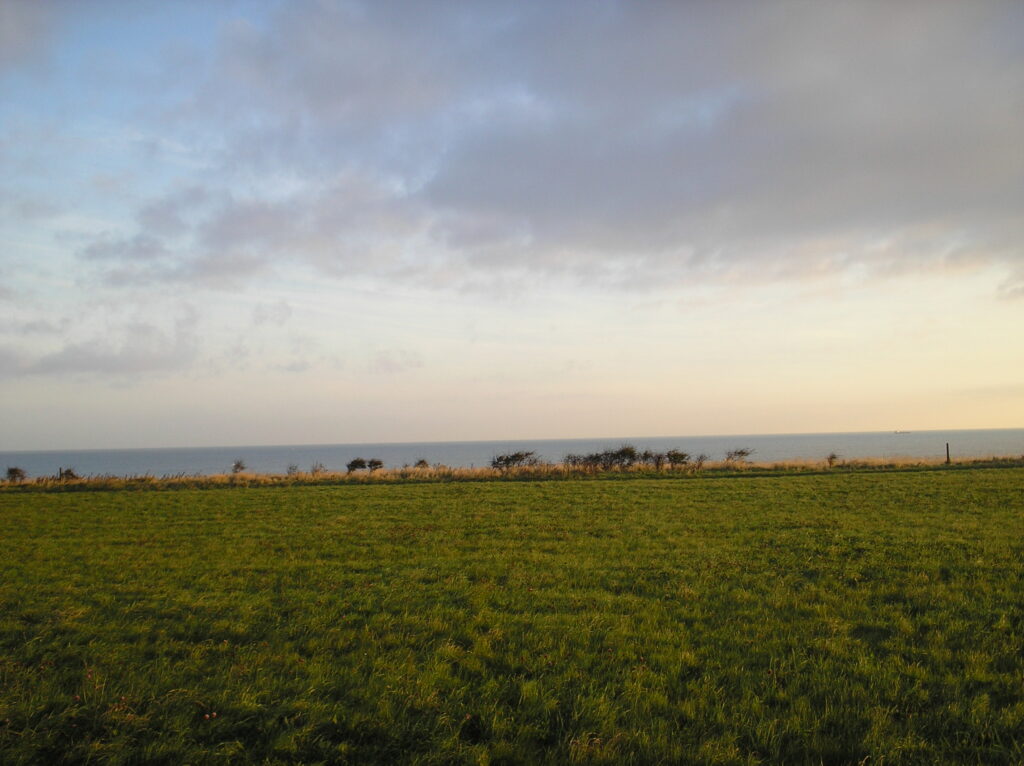
People using The Leas today will be walking over the spot where Marsden Cottage stood. They will be totally unaware of the opulence and grandness that once stood here, when some of the most powerful and influential people in 19th century South Shields society owned and graced the building or that 70 years ago this was a small hamlet providing homes for workmen and their families who help power the might of British industry. The lives, hardships, joys and tragedies that had occurred, underfoot, long ago but now forgotten.
B Cauwood 2013
All copyrights acknowledged were known.
Copyright © 2013 Marsden Banner Group. All rights reserved. Permission granted to reproduce text for educational use only (please cite source).
updated 2020
